Sea iceThe entire marine zone around Rothera and Marguerite Bay, as far as George VI Ice Shelf, becomes frozen in winter. Although fast-ice develops in embayments, the sea ice is notoriously unstable in this region, and several sledging members of the British Antarctic Survey have lost their lives when the sea ice broke up unexpectedly.
These photographs, taken both from the air around Adelaide Island an in Marguerite Bay, and on the ground near Rothera Field Station, early in the summer season (November and December), show sea ice in various stages of growth and decay.
|
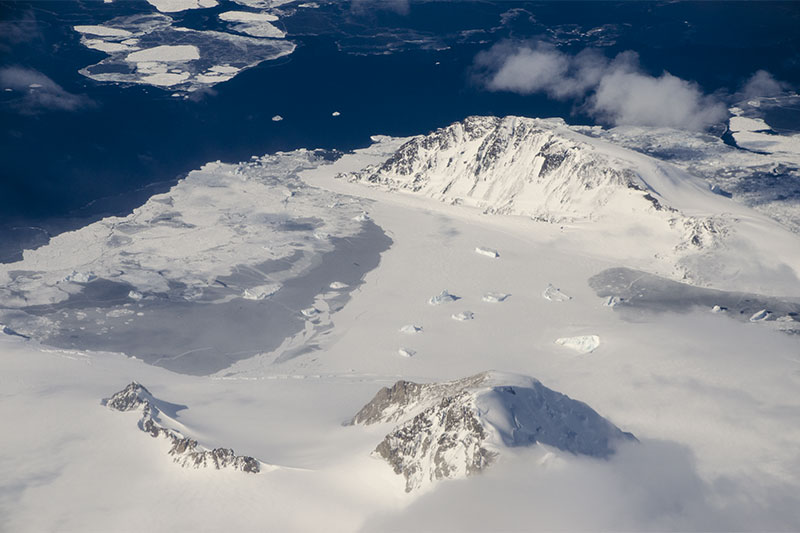 A small bay north of Adelaide Island shows sea ice in various stages of development, from right to left: fast ice with trapped icebergs, new late winter ice (greyish) and loose ice floes from previous winter. | 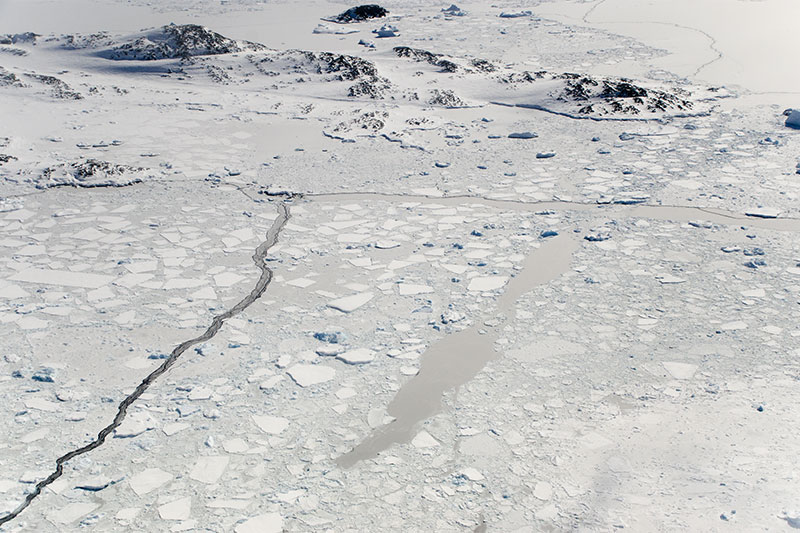 Multiple phases of ice growth near Rothera, showing floes of old winter sea ice (white, snow-covered), surrounded by fresh late winter sea ice (grey). Note the prominent "leads", a wide sealed older one to the right, and a narrow newly formed one on the left. | 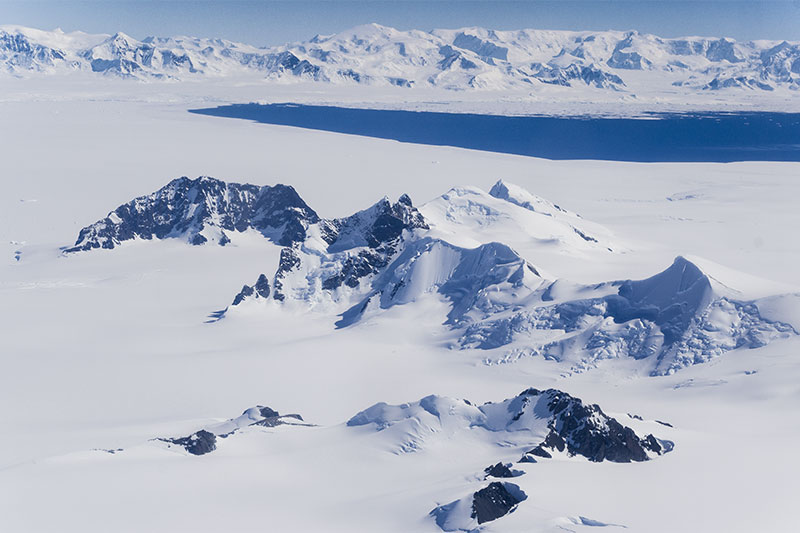 Approaching mid-summer (early December) open water reaches its tentacles into the inner reaches of Marguerite Bay, eventually reaching George VI Ice Shelf. Here, fast-ice still survives on either side of this open water zone in early December. Alexander Island is in the background. | 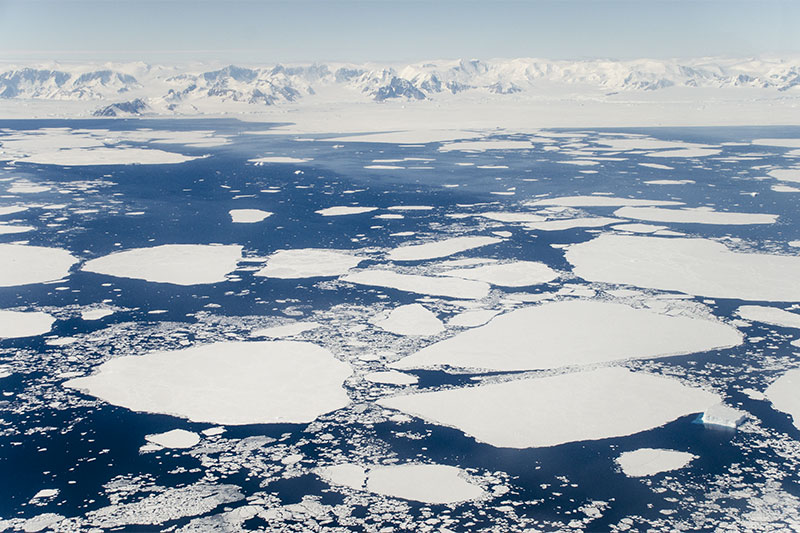 Large angular floes of last winter’s sea ice in Marguerite Bay, with fast ice adjacent to the Antarctic Peninsula in the background. |
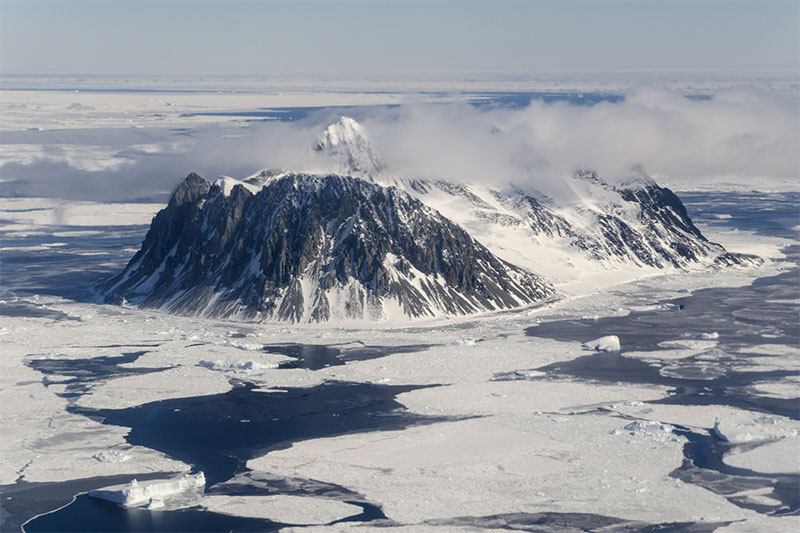 Last winter’s sea ice floes drifting around Léonie Island, Ryder Bay, near Rothera. The more jagged pieces are icebergs. | 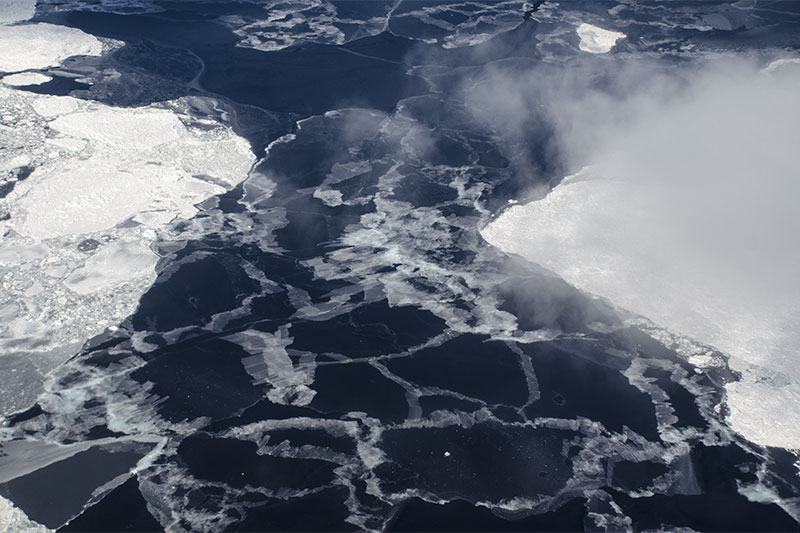 Old winter sea ice (white) contrasts with almost black fresh ice in this aerial view. Greyish zones mark the boundaries of the latter, where rafting of one new flow has taken place above another. | 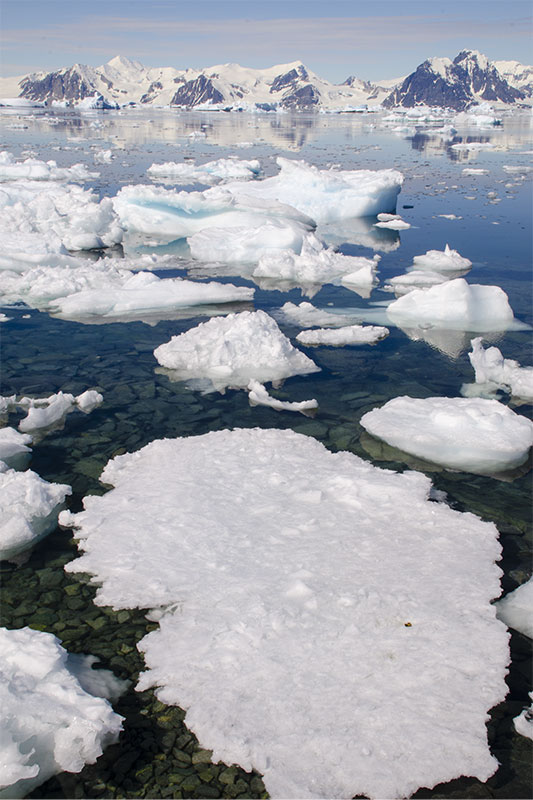 A low aerial photo of old ice floes in Laubeuf Fjord near Rothera. Their jagged edges and ice rubble on top is typical of floes jostling near the shore. | 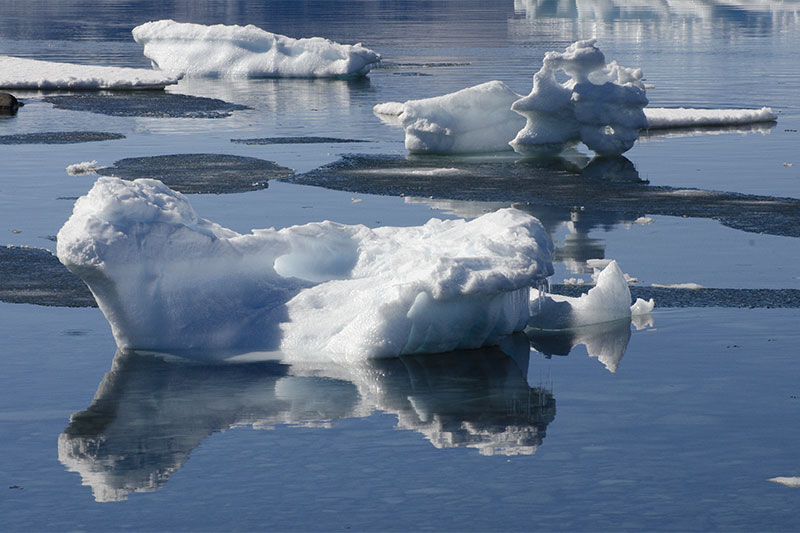 Old winter ice floes close to the shore at Rothera Point, showing reflections of their jagged form. |
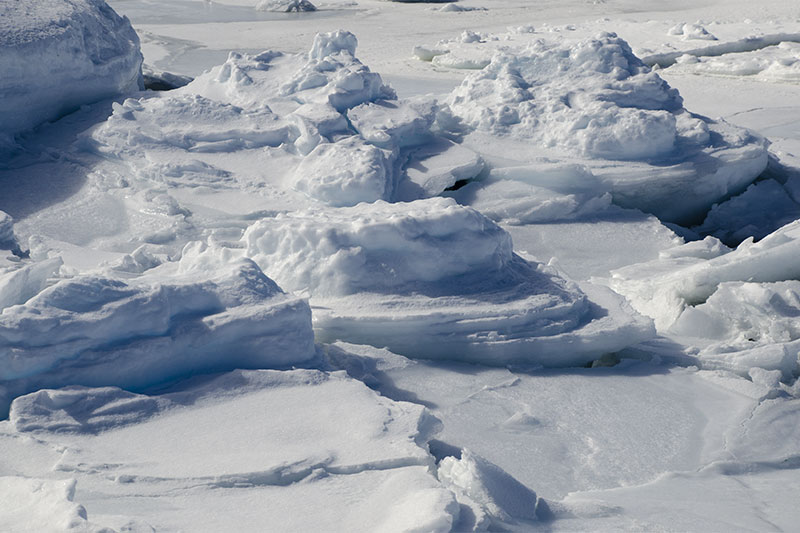 Separate floes that have coalesced adjacent to the shore at Rothera Point. Their stacked pancake-like form indicates successive freezing stages. | 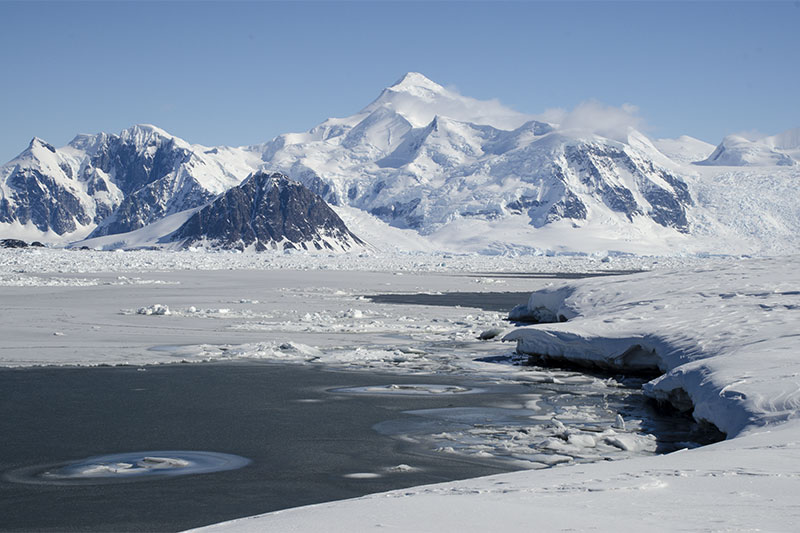 Sea ice-influenced coastlines are typified by an “ice foot”, where frozen sea spray consolidates on land during the early winter. This ice foot joins, then separates from, fast ice as the sea freezes over. This example is about 2 m high. Mt. Gaudry and its glaciers are in the background. | 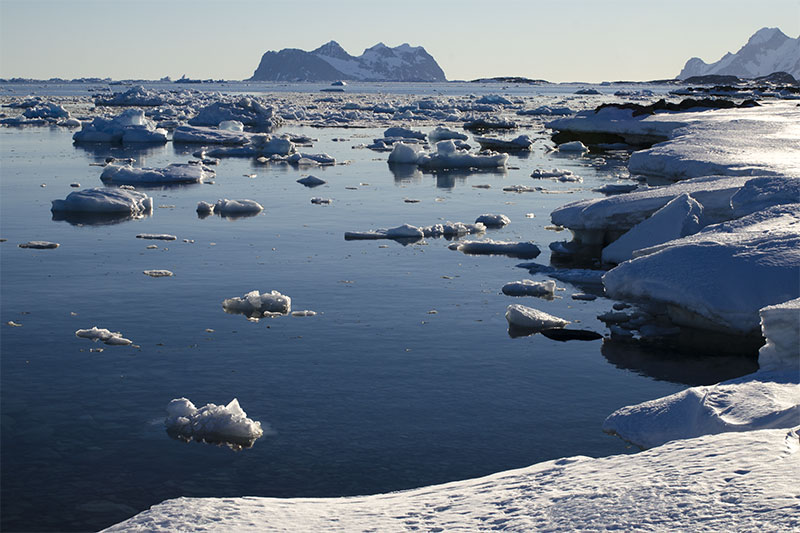 Close-up view of the ice foot as it begins to disintegrate. This view shows its appearance at low tide, resting on bedrock. Léonie Island is in the background. | 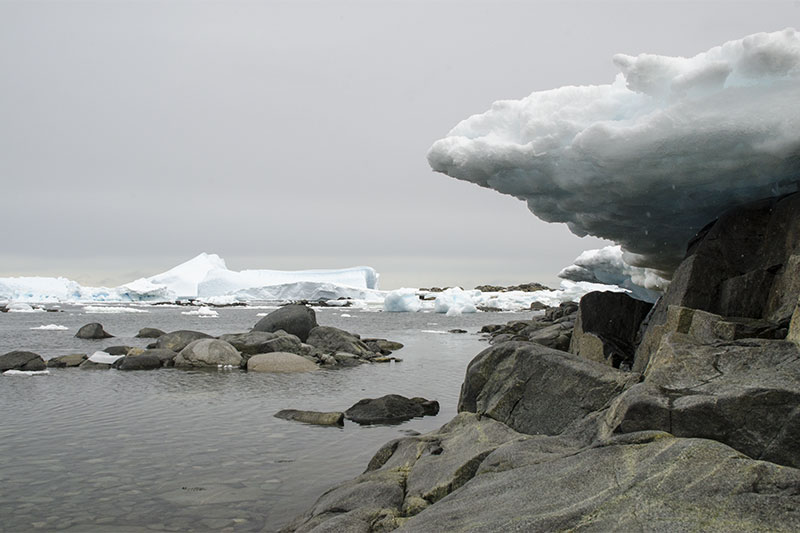 The ice foot at Rothera Point during an advanced stage of melting, forming a strongly undercut notch above bedrock. Many icebergs occur in the background. |
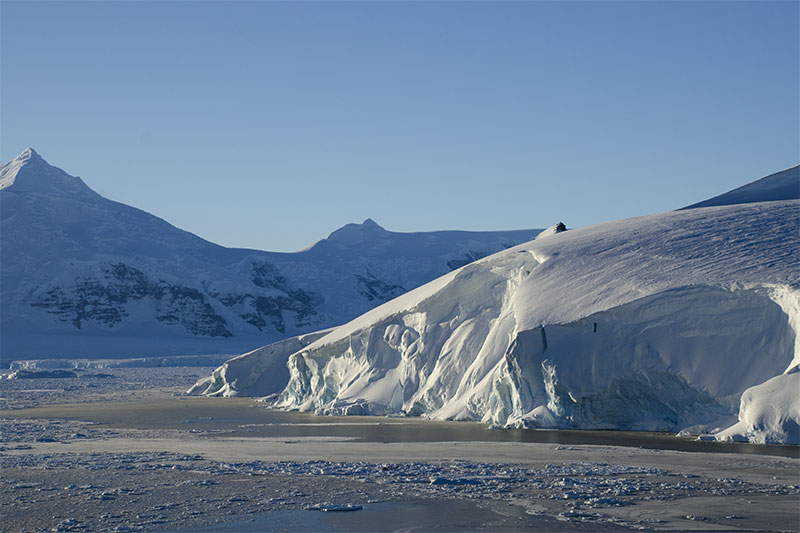 Interaction of newly formed sea ice and the ice cliff of Wormald Ice Piedmont, Rothera. Jagged bergy bits from nearby calving glaciers surround the new sea ice. | 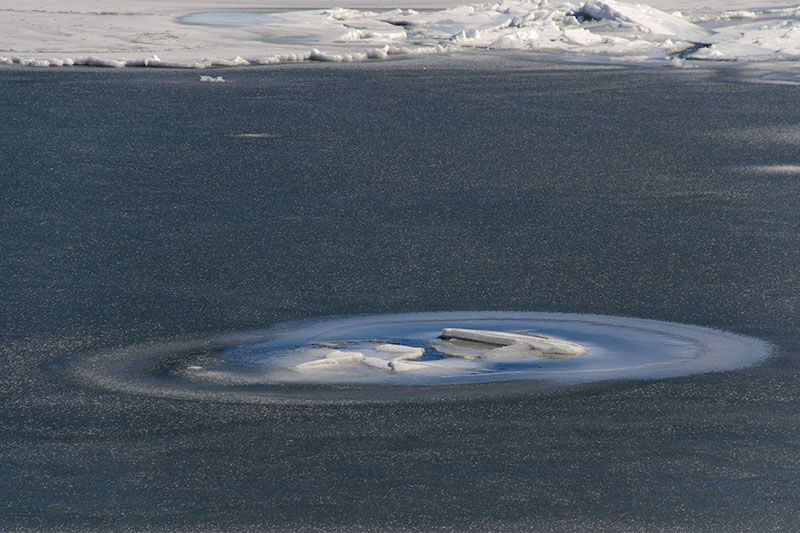 In early summer, the sea is subject to renewed freezing on cold still nights. Here the jostling of an old winter ice flow has here created a hole in the new sea ice and circular rims of successive refreezing events. | | |
| Photos Michael Hambrey, November and December 2012. |